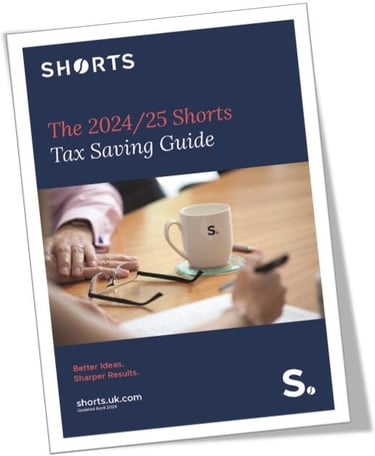.jpg)
The UK's Making Tax Digital (MTD) initiative has revolutionised how VAT-registered businesses manage their tax obligations by requiring digital recordkeeping and submission of VAT returns. Learn the essentials to MTD with this complete guide from the VAT team at Shorts.
Making Tax Digital (MTD) for VAT background
In late 2018, HMRC launched the pilot phase of Making Tax Digital (MTD) for VAT. MTD applies to all UK VAT-registered businesses, with certain exemptions.
Under MTD, businesses must maintain digital records and submit VAT returns using compatible software that connects to HMRC’s Application Programming Interface (API) — either directly or through bridging software. As a result, affected businesses must either:
- acquire suitable MTD-compatible software, or
- appoint an agent to act on their behalf.
Who is affected by MTD VAT?
Broadly, all UK VAT-registered businesses are subject to MTD rules. Businesses registering for VAT through the VAT registration service are automatically enrolled in MTD for VAT. Those seeking an exemption must apply separately.
Who is exempt from MTD VAT?
According to HMRC, you may be exempt from MTD for VAT if:
- It is not practical for you to use digital tools to keep records or submit VAT returns due to age, disability, or remote location
- You (or your business) are subject to an insolvency procedure
- Your business is run entirely by members of a religious society or order whose beliefs are incompatible with electronic communications or recordkeeping
- You are already exempt from filing VAT returns online
How to apply for an exemption from MTD VAT
You or your agent can request an exemption by contacting HMRC, either in writing or by phone. HMRC will assess your request once all required information is provided. You will receive a decision in writing. If refused, the letter will include information about your right to appeal.
Information required for an exemption request:
- Your VAT registration number
- Your business name and principal place of business
- The reason for your exemption request
- Details of how you currently file VAT returns
- Reasons why you cannot use software or maintain digital records, even if you can access online VAT services
- Any other relevant information explaining your inability to comply with MTD
How should I keep digital records for MTD?
Under MTD rules, all VAT-registered businesses must maintain digital records using functional compatible software. These digital records, referred to as your electronic account, must be preserved digitally in a complete and unaltered format.
Records not required by law for VAT returns do not need to be kept within functional compatible software and may be maintained separately.
What records should I keep digitally?
Electronic account requirements
Unless exempt, some of the digital records you must keep includes:
- Designatory data
- Business name
- Address of principal place of business
- VAT registration number
- Any VAT accounting schemes used
Supplies made
For each supply you make, record:
- Time of supply (tax point)
- Net value of the supply (excluding VAT)
- VAT rate charged
Supplies received
For each supply you receive, record:
- Time of supply (tax point)
- Value of the supply
- Amount of input tax to be claimed
Summary data
Your software must support each VAT return by including:
- Total output tax owed on sales
- Total tax owed on acquisitions from EU member states (where the Northern Ireland Protocol applies)
- Total tax payable under reverse charge procedures
- Total input tax claimable on business purchases
- Input tax on acquisitions from EU member states (Northern Ireland only)
- Tax due or reclaimable after error corrections or adjustments
- Any other adjustments required by VAT rules
Additional recordkeeping in specific situations
Certain industries and businesses may have other VAT schemes available that impact their MTD requirements. Here are a few:
Retail scheme
If you use a Retail Scheme, you must keep a digital record of daily gross takings (DGT). You are not required to maintain individual transaction records within your functional compatible software.
Flat Rate Scheme (FRS)
The flat rate scheme remains available. Under it, digital records of individual purchases are not required unless they relate to:
- Capital expenditure on which input tax has been reclaimed
- Relevant goods used to determine whether the limited cost business rate applies
Margin schemes
You do not need to keep digital records of additional margin scheme calculations. These must still be kept, but not necessarily in a digital format.
Can I outsource my MTD VAT work to an agent?
You can authorise HMRC to receive and send data to an agent on your behalf for any MTD service. Once authorised, the agent can:
- Use compatible software to submit, view, and edit data
- Maintain digital records on your behalf
Software and digital links
HMRC defines functional compatible software as a:
- Software program or set of programs
- Product or set of products
- Application or set of applications
This software must be able to:
- Record and preserve digital records
- Submit data to HMRC via API
- Receive information from HMRC via API
If your software performs all these functions within a single package, digital link rules may not apply.
What Is a Digital Link?
A digital link is an electronic transfer or exchange of data between software programs, products, or applications without manual intervention.
While spreadsheets may be used to record transactions or as part of a wider solution, spreadsheets alone are not MTD-compliant. They must be either:
- API-enabled, or
- used alongside commercial MTD-compatible software.
This ensures that data can be transferred to/from HMRC via a digital link. Where multiple software programs are used to maintain digital records, all data transfers that are part of your electronic account must also be digitally linked.
Once data has been entered into a software program as part of your electronic account, any further movement, modification, or use of that data must occur via digital links. Manual transfers within and between software components are not compliant with MTD.
How do you submit an MTD VAT return?
An MTD VAT return can be submitted directly from a spreadsheet, using bridging software, through the MTD portal provided by HMRC, or by using a functionally compatible accounting service, such as Xero.
When using a piece of commercial accounting software, the process of submitting an MTD VAT return will vary. We suggest consulting software support or speaking to Shorts if you have questions about submissions using a specific piece of software.
Do you need assistance with a VAT return?
VAT is a complicated tax, and getting it right is crucial. The Shorts VAT team can help with all areas of VAT, including initial registration, VAT inspection and investigations, the completion and submission of VAT returns, and advice on how to correct errors and mistakes.

Lynne Gill
My area of expertise is land and property transactions but I have extensive knowledge of both domestic and international VAT and I love complex VAT queries. I have an Honours degree in Business Studies and a VAT legal and technical qualification from the Institute of Indirect Taxation.
View my articlesTags: VAT


